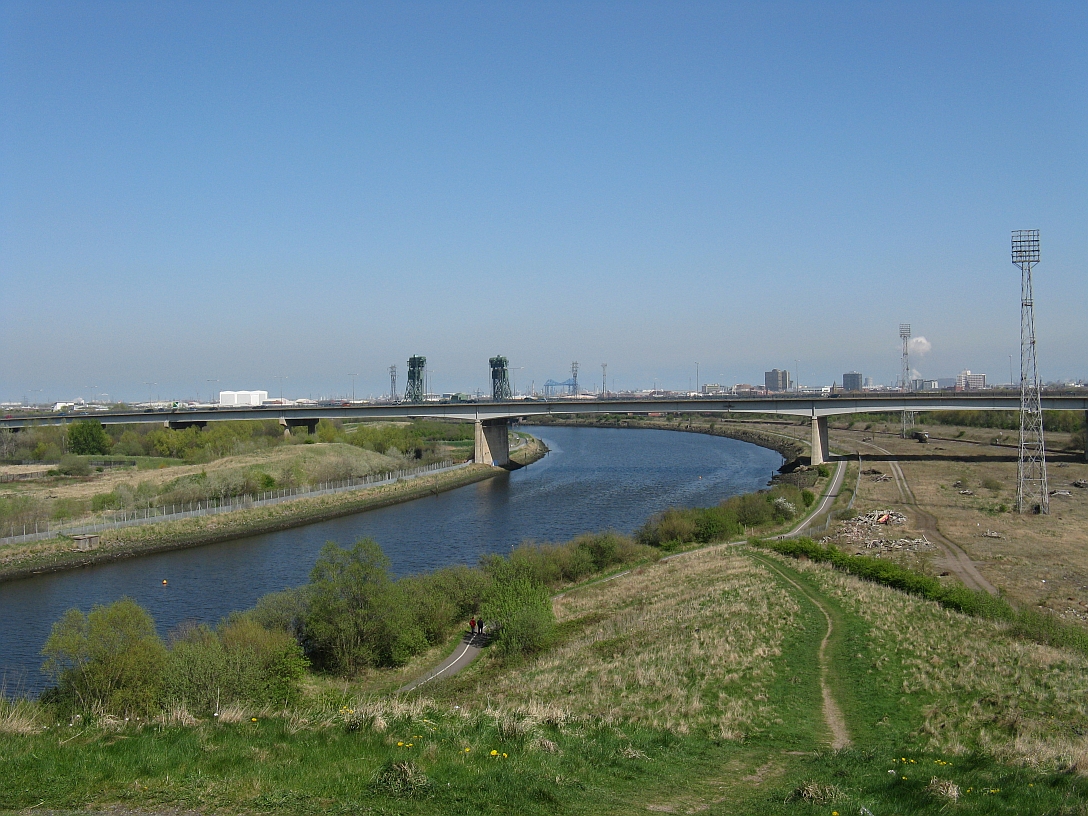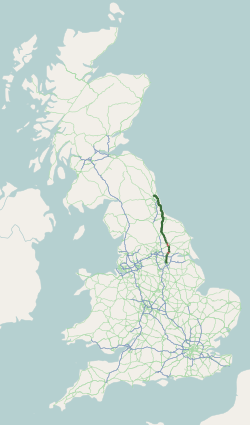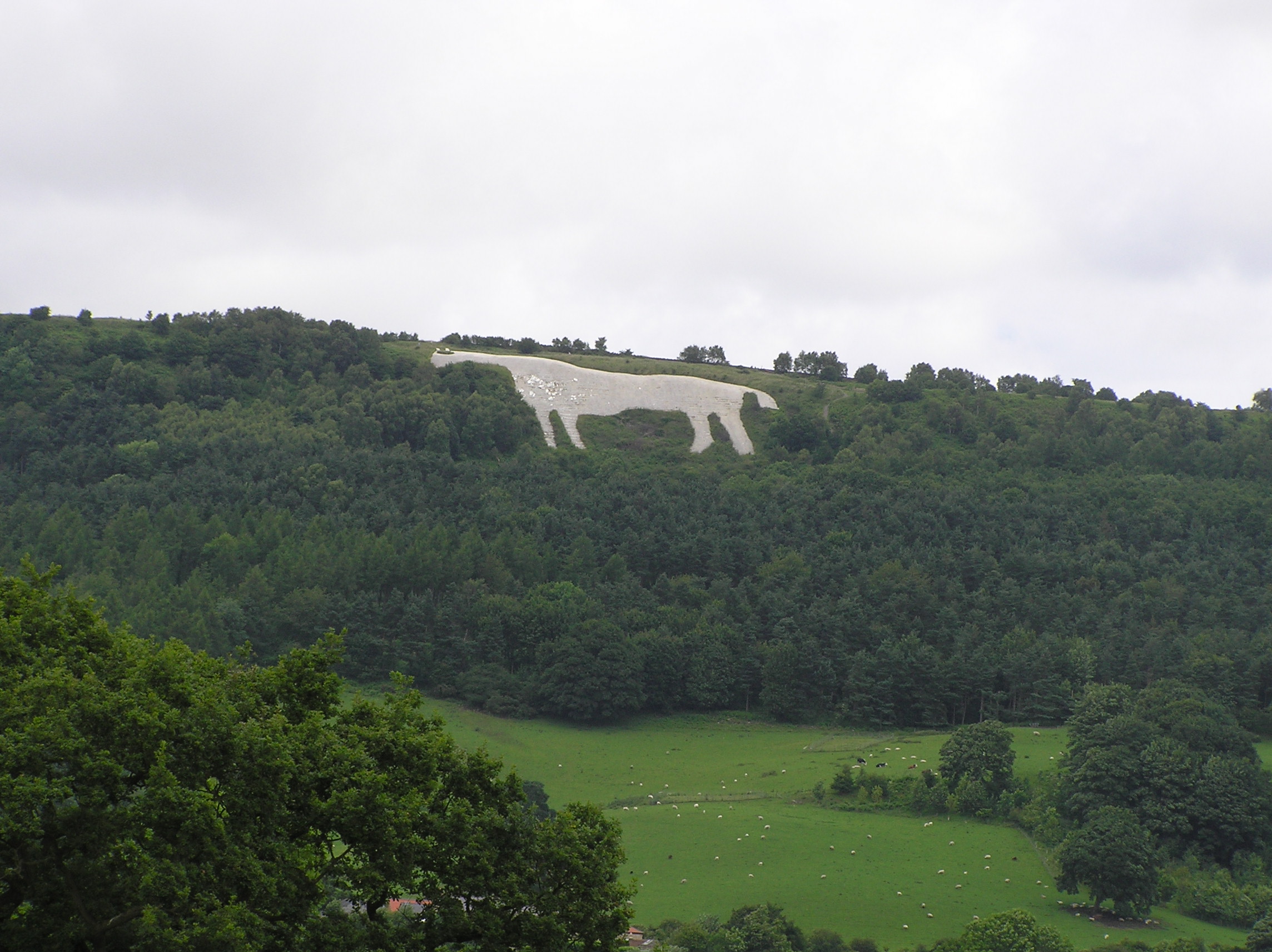|
River Wiske
The River Wiske is a tributary of the River Swale in Yorkshire, England. The Wiske gives its name to several villages it passes through. The name Wiske is derived from an Old English word ''wisca'' meaning a water meadow. It was once known as the Foulbroke, a name for which some writers commented that it was well deserved. The river was maintained by the River Wiske Internal Drainage Board, which was part of the Shires Group of IDBs. It is within the national character areas (NCAs) of the Vale of Mowbray and the Tees Lowlands. Course The river becomes the Wiske at the confluence of Carr Beck and Stony Lane Beck south of Ingleby Arncliffe close to the Tontine Bridge where the A19 and A172 roads diverge. It flows north in a series of meanders to East Rounton where it turns north-westerly and then westerly past Appleton Wiske. The river continues to flow westerly until just after passing under the A167 road near Great Smeaton where it turns south. It follows a mainly southerly ... [...More Info...] [...Related Items...] OR: [Wikipedia] [Google] [Baidu] |
Ingleby Arncliffe
Ingleby Arncliffe is a village and civil parish in the Hambleton district of North Yorkshire, England. It is situated between the A172 and A19 roads, north-east from Northallerton and south-east from the small market town of Stokesley, and is on the edge of the North York Moors National Park. The village is conjoined to its smaller neighbour, Ingleby Cross. Ingleby Arncliffe lies in the historic county of the North Riding of Yorkshire. History According to ''A Dictionary of British Place Names'', Ingleby is derived from the Old Scandinavian "Englar + by", meaning "farmstead or village of the Englishmen", and Arncliffe, Old English "earn + cliff", meaning "eagles' cliff". Ingleby Arncliffe Grade II* listed Anglican church is dedicated to All Saints. It dates from 1821 but includes 14th-century effigies An effigy is an often life-size sculptural representation of a specific person, or a prototypical figure. The term is mostly used for the makeshift dummies used for ... [...More Info...] [...Related Items...] OR: [Wikipedia] [Google] [Baidu] |
River Tees
The River Tees (), in Northern England, rises on the eastern slope of Cross Fell in the North Pennines and flows eastwards for to reach the North Sea between Hartlepool and Redcar near Middlesbrough. The modern day history of the river has been tied with the industries on Teesside in its lower reaches, where it has provided the means of import and export of goods to and from the North East England. The need for water further downstream also meant that reservoirs were built in the extreme upper reaches, such as Cow Green. Etymology The name ''Tees'' is possibly of Brittonic origin. The element ''*tēs'', meaning "warmth" with connotations of "boiling, excitement" (Welsh ''tes''), may underlie the name. ''*Teihx-s'', a root possibly derived from Brittonic ''*ti'' (Welsh ''tail'', "dung, manure"), has also been used to explain the name ''Tees'' (compare River Tyne). Geography The river drains and has a number of tributaries including the River Greta, River Lune, River Balder, ... [...More Info...] [...Related Items...] OR: [Wikipedia] [Google] [Baidu] |
Brown Long-eared Bat
The brown long-eared bat or common long-eared bat (''Plecotus auritus'') is a small Eurasian insectivorous bat. It has distinctive ears, long and with a distinctive fold. It is extremely similar to the much rarer grey long-eared bat which was only validated as a distinct species in the 1960s. An adult brown long-eared bat has a body length of 4.5–4.8 cm, a tail of 4.1–4.6 cm, and a forearm length of 4–4.2 cm. The ears are 3.3–3.9 cm in length, and readily distinguish the long-eared bats from most other bat species. They are relatively slow flyers compared to other bat species. Habitat The brown long-eared bat is found throughout Europe, with the exception of Greece, southern Italy and southern Spain. It is found to the east up to the Urals and Caucasus. The UK distribution can be found on the National Biodiversity Network website and can be seehere Brown long-eared bats regularly utilise buildings roosting in undisturbed roof spaces either singly, i ... [...More Info...] [...Related Items...] OR: [Wikipedia] [Google] [Baidu] |
Soprano Pipistrelle
The soprano pipistrelle (''Pipistrellus pygmaeus'') is a small species of bat. It is found in Europe and often roosts on buildings. Taxonomy Until 1999, the soprano pipistrelle was considered as conspecific with the common pipistrelle The common pipistrelle (''Pipistrellus pipistrellus'') is a small pipistrelle microbat whose very large range extends across most of Europe, North Africa, South Asia, and may extend into Korea. It is one of the most common bat species in the Brit .... It is possible that these two species diverged from one another in the Mediterranean, resulting in the Soprano pipistrelle having the ability to thermoregulate at temperatures as high as 40 degrees Celsius. Since the two species were split, a number of other differences, in appearance, habitat and food, have also been discovered. The two species were first distinguished on the basis of the different frequency of their echolocation calls. The common pipistrelle uses a call of 45 kHz, while the s ... [...More Info...] [...Related Items...] OR: [Wikipedia] [Google] [Baidu] |
European Otter
The Eurasian otter (''Lutra lutra''), also known as the European otter, Eurasian river otter, common otter, and Old World otter, is a semiaquatic mammal native to Eurasia. The most widely distributed member of the otter subfamily (Lutrinae) of the weasel family (Mustelidae), it is found in the waterways and coasts of Europe, many parts of Asia, and parts of northern Africa. The Eurasian otter has a diet mainly of fish, and is strongly territorial. It is endangered in some parts of its range, but is recovering in others. Description The Eurasian otter is a typical species of the otter subfamily. Brown above and cream below, these long, slender creatures are well-equipped for their aquatic habits. Their bones show osteosclerosis, increasing their density to reduce buoyancy. This otter differs from the North American river otter by its shorter neck, broader visage, the greater space between the ears and its longer tail. However, the Eurasian otter is the only otter in much of its r ... [...More Info...] [...Related Items...] OR: [Wikipedia] [Google] [Baidu] |
European Water Vole
The European water vole or northern water vole (''Arvicola amphibius''), is a semi-aquatic rodent. It is often informally called the water rat, though it only superficially resembles a true rat. Water voles have rounder noses than rats, deep brown fur, chubby faces and short fuzzy ears; unlike rats their tails, paws and ears are covered with hair. In the wild, on average, water voles only live about five months. Maximum longevity in captivity is two and a half years. Appearance Water voles reach in length, plus a tail which is about half the length of the body. Weights reported for adults are variable. It is possible for large, optimal adults to weigh as much as However, these are peak weights. Elsewhere, the mean body mass has been reported as , although this figure includes immature water voles. The minimum weight to successfully breed as well as to survive winter is reportedly in females and in males.Yavuz, Güliz, Ercüment Çolak, and Teoman Kankılıç. ''Investig ... [...More Info...] [...Related Items...] OR: [Wikipedia] [Google] [Baidu] |
Yorkshire Wildlife Trust
The Yorkshire Wildlife Trust is a charitable non-governmental organisation, one of the UK's 46 county-based Wildlife Trusts. It's focus is nature conservation and it works to achieve a nature-rich Yorkshire with healthy and resilient ecosystems that support both Yorkshire's wildlife and its people. It works across the ceremonial county's of East, North, South, and West Yorkshire; with the exception of the Sheffield District and some of Rotherham District, where the separate Sheffield and Rotherham Wildlife Trust operates, and the Unitary Authorities of Middlesbrough, Redcar and Cleveland, and Stockton-on-Tees, where the separate Tees Valley Wildlife Trust operates. The second oldest Wildlife Trust, having been originally formed as the Yorkshire Naturalists Trust in 1946, it is now one of the largest Wildlife Trusts with an income of over £13 million, and over 150 staff. The Trust is a membership organisation and has grown to become one of the largest civil society organisa ... [...More Info...] [...Related Items...] OR: [Wikipedia] [Google] [Baidu] |
Environment Agency
The Environment Agency (EA) is a non-departmental public body, established in 1996 and sponsored by the United Kingdom government's Department for Environment, Food and Rural Affairs, with responsibilities relating to the protection and enhancement of the environment in England (and until 2013 also Wales). Based in Bristol, the Environment Agency is responsible for flood management, regulating land and water pollution, and conservation. Roles and responsibilities Purpose The Environment Agency's stated purpose is, "to protect or enhance the environment, taken as a whole" so as to promote "the objective of achieving sustainable development" (taken from the Environment Act 1995, section 4). Protection of the environment relates to threats such as flood and pollution. The vision of the agency is of "a rich, healthy and diverse environment for present and future generations". Scope The Environment Agency's remit covers almost the whole of England, about 13 million h ... [...More Info...] [...Related Items...] OR: [Wikipedia] [Google] [Baidu] |
Brompton, Hambleton
Brompton is a village, civil parish and electoral ward in the Hambleton District of North Yorkshire, England, about north of the county town of Northallerton. Practically a suburb of the nearby county town, the village was near the site of a battle between English and Scots armies and was the location of mills producing linen goods from the 18th century onward. With 2,055 people this village has grown considerably since the 1800s. History The village is mentioned in the Domesday Book of 1086 as ''Bruntone'' in the Allerton hundred. Prior to the invasion, the manor was granted to ''Earl Edwin'', but subsequently granted in 1086 to the Crown and were added to the lands that were the possession of the Bishop of Durham St Cuthbert and remained so after 1086. In 1836 those lands were transferred to the see of Ripon. The village became an ecclesiastical parish in 1843. The etymology of the name is derived from a combination of the Old English word ''brōm'', meaning ''broom'' and ... [...More Info...] [...Related Items...] OR: [Wikipedia] [Google] [Baidu] |
A19 Road
The A19 is a major road in England running approximately parallel to and east of the A1 road. Although the two roads meet at the northern end of the A19, the two roads originally met at the southern end of the A19 in Doncaster, but the old route of the A1 was changed to the A638. From Sunderland northwards, the route was formerly the A108. In the past the route was known as the East of Snaith-York-Thirsk-Stockton-on-Tees-Sunderland Trunk Road. Most traffic joins the A19, heading for Teesside, from the A168 at Dishforth Interchange. Route Doncaster–Selby The southern end of the A19 starts at the ''St Mary's Roundabout'' with the A630 ''Church Way'' and A638 just to the north of Doncaster itself near to the parish church; this junction has been improved in recent years. It leaves the A638 at the next roundabout as ''Bentley Road'', and then winds its way over the East Coast Main Line, which it follows through Selby and York, through the suburb of Bentley passing the ... [...More Info...] [...Related Items...] OR: [Wikipedia] [Google] [Baidu] |
Hambleton District
Hambleton is a local government district in North Yorkshire, England. The administrative centre is Northallerton, and the district includes the outlying towns and villages of Bedale, Thirsk, Great Ayton, Stokesley, and Easingwold. The district was formed by the Local Government Act 1972 on 1 April 1974, as a merger of Northallerton Urban District, Bedale Rural District, Easingwold Rural District, Northallerton Rural District, and parts of Thirsk Rural District, Stokesley Rural District and Croft Rural District, all in the North Riding of Yorkshire. Geography Hambleton covers an area of 1,311.17 km² most of which, 1,254.90 km², is green space. The district is named after the Hambleton Hills, part of the North York Moors National Park, on the eastern edge of the district. This area is the subject of a national habitat protection scheme as articulated in the United Kingdom's Biodiversity Action Plan. About 75% of the district lies in the Vales of Mowbray and of ... [...More Info...] [...Related Items...] OR: [Wikipedia] [Google] [Baidu] |
York
York is a cathedral city with Roman origins, sited at the confluence of the rivers Ouse and Foss in North Yorkshire, England. It is the historic county town of Yorkshire. The city has many historic buildings and other structures, such as a minster, castle, and city walls. It is the largest settlement and the administrative centre of the wider City of York district. The city was founded under the name of Eboracum in 71 AD. It then became the capital of the Roman province of Britannia Inferior, and later of the kingdoms of Deira, Northumbria, and Scandinavian York. In the Middle Ages, it became the northern England ecclesiastical province's centre, and grew as a wool-trading centre. In the 19th century, it became a major railway network hub and confectionery manufacturing centre. During the Second World War, part of the Baedeker Blitz bombed the city; it was less affected by the war than other northern cities, with several historic buildings being gutted and restore ... [...More Info...] [...Related Items...] OR: [Wikipedia] [Google] [Baidu] |








